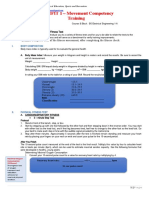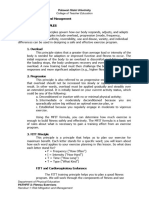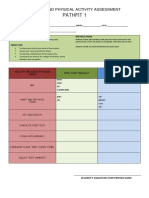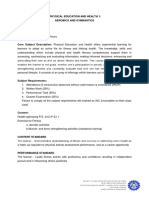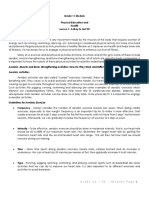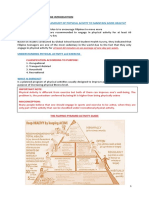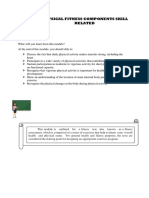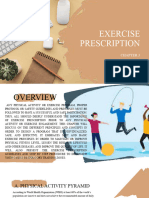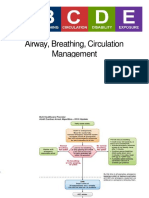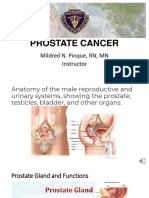100% found this document useful (1 vote)
5K views23 pagesChapter 2 - Exercise Program Design
This chapter discusses the principles and guidelines for designing an effective exercise program. It covers the principles of overload, progression, specificity, individuality, and reversibility. It also discusses pre-participation screening, fitness testing, setting goals, and designing a program using the FITT principle of frequency, intensity, time and type. Warm-ups and cool-downs are recommended parts of an exercise routine to safely increase body temperature and gradually return the body to its normal state.
Uploaded by
Kim Lascoña PuruggananCopyright
© © All Rights Reserved
We take content rights seriously. If you suspect this is your content, claim it here.
Available Formats
Download as PPTX, PDF, TXT or read online on Scribd
100% found this document useful (1 vote)
5K views23 pagesChapter 2 - Exercise Program Design
This chapter discusses the principles and guidelines for designing an effective exercise program. It covers the principles of overload, progression, specificity, individuality, and reversibility. It also discusses pre-participation screening, fitness testing, setting goals, and designing a program using the FITT principle of frequency, intensity, time and type. Warm-ups and cool-downs are recommended parts of an exercise routine to safely increase body temperature and gradually return the body to its normal state.
Uploaded by
Kim Lascoña PuruggananCopyright
© © All Rights Reserved
We take content rights seriously. If you suspect this is your content, claim it here.
Available Formats
Download as PPTX, PDF, TXT or read online on Scribd
/ 23



